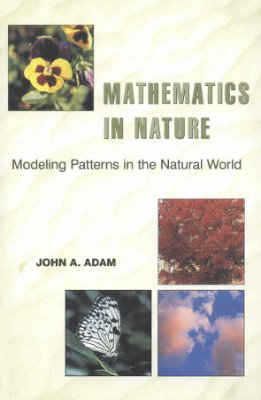Princeton University Press, 2006. - 416 Pages.
Have you wondered how rainbows or sand dunes form? Does it puzzle you why drying mud forms polygonally shaped cracks? Can you explain the pattes on a butterfly's wings or how birds fly? In this delightful book, John Adam invites us to question and to share his enthusiasm for developing mathematical models to explore a wide range of everyday natural phenomena. Mathematics in Nature can be used as a text on mathematical modeling or as a book to dip into and encourage us to observe and wonder at the beauty of nature. It has the potential of becoming a classic.
Have you wondered how rainbows or sand dunes form? Does it puzzle you why drying mud forms polygonally shaped cracks? Can you explain the pattes on a butterfly's wings or how birds fly? In this delightful book, John Adam invites us to question and to share his enthusiasm for developing mathematical models to explore a wide range of everyday natural phenomena. Mathematics in Nature can be used as a text on mathematical modeling or as a book to dip into and encourage us to observe and wonder at the beauty of nature. It has the potential of becoming a classic.

